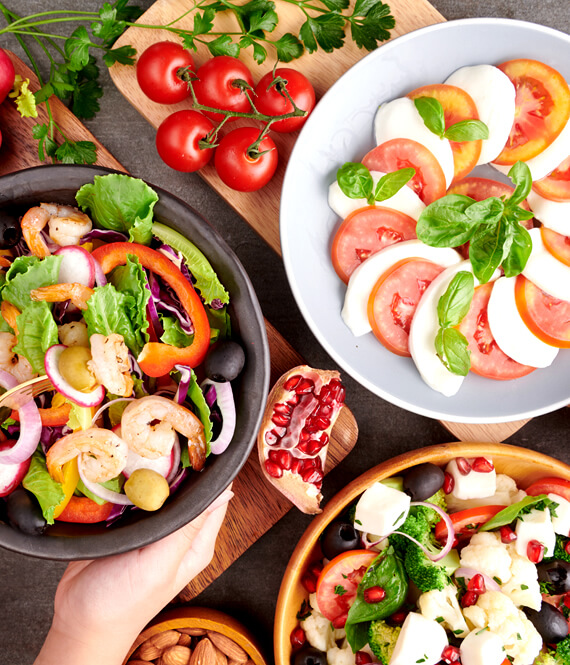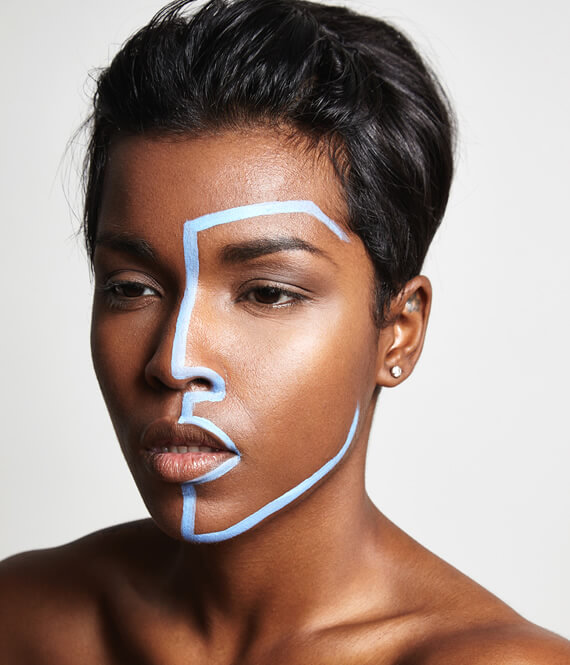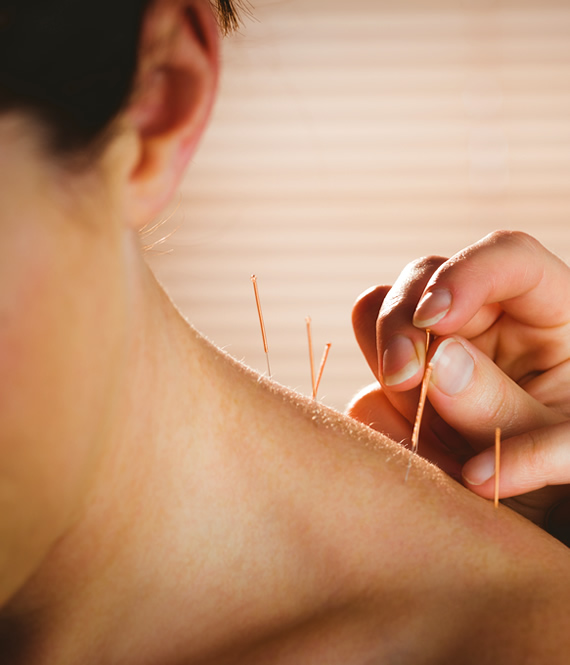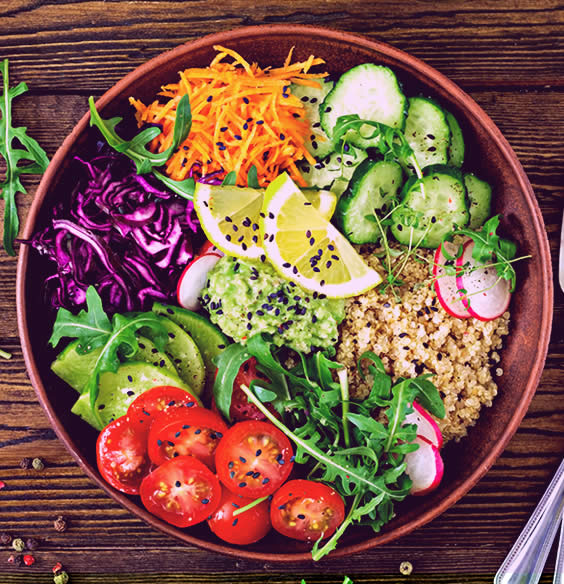
4 Tasty Diets To Try in 2024
We recommend helpful products in our articles. Read our full disclosure here. The content on this website is not intended to be a substitute for professional advice, diagnosis, or treatment.
The Ketogenic Diet
What is Keto Diet?
The Ketogenic diet, which reduces carb intake and replaces it with fat, has become increasingly popular since it has allowed people who prefer to eat meat a diet that is suited to their palate.
The diet departs from the traditional macronutrient split of around 30% fat, 20% protein, and 50% carbohydrates that is recommended by the USDA.
The diet works by reducing carbohydrate intake and replacing it almost completely with fat intake.
This reduced consumption or almost elimination of carbohydrates puts the body in a metabolic state known as Ketosis.
Generally, popular ketogenic resources suggest an average ratio or distribution of the Daily caloric intake in this manner: 70-80% of calories from fat, 10-20% of calories coming from protein sources protein, and finally, 5 -10% from carbohydrates.
It may be jarring, to begin with, but you can slowly reduce your carbohydrate intake gradually, instead of just jumping from, say, 30% of your food intake in carbs to less than 10% in a single week.
It is a significant change in the body’s metabolism.
Usually, when we eat carbohydrates, our body turns that into sugars which our body uses for fuel.
The human body adjusts from burning carbohydrates to instead burning fat, which results in fat loss.
As you burn fat, your insulin levels will drop, which causes the kidney to release more sodium into the blood.
This is a common side effect and is more popularly known as the keto flu.
Beginners normally report having dizziness, headaches, nausea, low energy levels, and muscle cramps.
These typically occur within the first two weeks.
The whole point of the diet is to keep your body in a state of ketosis, so you are constantly making sure that you do minimize your carbohydrate intake, limiting your body’s supply of glucose (sugar), which is our body’s main source of energy.
Generally, this involves limiting carb consumption to around 20 to 50 grams per day and filling up on fats, such as meat, fish, eggs, nuts, and healthy oils (1).
Studies have shown that this type of diet can help you lose weight and improve your health (2).
But before you go on your ketogenic diet journey, make sure you consult your physician.
What is Keto Diet Good For?
Keto diets appear to be good for weight loss and have some positive effects on reducing epileptic seizures.
The ketogenic diet can help you lose excess fat, which is closely linked to type 2 diabetes, prediabetes, and metabolic syndrome (3) Another study in 34 older adults found that those who followed a ketogenic diet for 8 weeks lost five times as much in total body fat compared to those who followed a generic low-fat diet. (4) In addition to that, the diet also led to a reduction in the diastolic blood pressure and triglyceride levels of those who tried the ketogenic diet. (5) Lower blood glucose levels, improved insulin sensitivity, and increased ketones may also play a key role. (6)
The ketogenic diet actually originated as a tool for treating neurological diseases.
In the past, studies have shown that the ketogenic diet can cause significant reductions in seizures in epileptic children. (7) More recent studies have also found that the ketogenic diet may help reduce symptoms of Alzheimer’s disease and slow its progression. (8)The ketogenic diet can help improve risk factors like body fat, good cholesterol levels, blood pressure, and blood sugar (9) The diet is now being reviewed as an additional treatment for cancer because it may help mitigate and slow down tumor growth. (10) One piece of evidence suggests that the diet helped improve symptoms of Parkinson’s disease (11).
Polycystic ovary syndrome.
The keto diet may lower insulin levels, which plays a key role in polycystic ovary syndrome (PCOS). (12)
What Should You Eat on a Keto Diet?
You’ll be paying more attention to how much you eat in addition to what you eat.
You really have to nearly get rid of your carbohydrate intake and minimize your protein intake.
Having an excess of these two breaks your ketosis and defeats the purpose of going on this diet.
It bears repeating that to be successful, you need to be strict with sticking to the right ratio for macronutrients, 80% fat, 5% carbohydrates, and 15% protein.
In addition to keeping what you eat in mind, you also have to remember to stick to the diet without cheat days.
If you eat too much protein or carbohydrates, it will break your ketosis, so instead of improving your health, you just end up eating a high-fat diet that results in unhealthy fats. (13)
Avoid eating sugars like juices, pastries, cakes, candies, ice cream, and carbohydrates like pasta, bread, rice, and grains.
Avoid fruits except when taken in small portions.
Beans, lentils, chickpeas, and other legumes are to avoid, as well as root vegetables that are rich in carbs like potatoes, carrots, and parsnips.
Even though you are upping your fat intake, you still don’t want unhealthy fats like processed vegetable oils, mayonnaise, margarine, and artificial trans fats.
Avoid alcohol consumption as well.
Instead, go for Avocado oil, coconut oil, butter, and heavy cream.
For your fat, look for grass-fed beef, fatty fish like salmon and mackerel, and the dark cuts of chicken like the thigh and not the breast.
Occasionally partake in bacon and low-fat proteins like shrimp and skinless chicken breast.
The Paleo Diet
What is Paleo Diet?
The paleo diet is focused on eating foods that might have been available in the Paleolithic era.
Hence the name, some people refer to it as the caveman diet.
Those that firmly believe in the paleo diet say that the human body has not evolved to process dairy, legumes, and grains, so eating these foods would increase the risk of certain health conditions.
The goal is to eat natural, unprocessed foods with minimal preparation and processing, as our paleolithic ancestors would have done.
In addition to having a controlled diet, the proponents of the diet believe in incorporating a lot of exercise and physical activity as that is what our bodies were meant to do.
The Paleo diet is attractive for its simplicity.
The simpler a diet is, the easier it is to stick to it and therefore get more results out of it.
What is Paleo Diet Good For?
It appears effective in improving glucose control and lipid profiles among diabetics compared with those who are taking a conventional diet containing whole grains, legumes, moderate salt intake, and low-fat dairy. (14)
It also improves blood pressure, lipid profiles, and glucose tolerance.
There’s also decreased insulin secretion and increased insulin sensitivity without weight loss, even among people with sedentary lifestyles. (15)
A study compared the diet with other popular diets as well as a control group and found that The Paleo diet improves risk factors for chronic disease more compared to other dietary interventions.
In the comparison made, the Paleolithic diet resulted in more short-term improvements in metabolic syndrome components than other guideline-based control diets. (16) This speaks to its efficacy and not just its novelty as an idea.
Followers of the gluten-free diet argue that gluten causes inflammation and related diseases, while those who are on a Paleo diet claim all cereals as dangerous for human health.
Since the paleo diet is largely gluten and cereal-free, its proponents believe that the diet is good for those with food intolerances to gluten and cereals. (17)
Another study performed several randomized control trials to establish a relationship between the Paleolithic diet and the prevention and control of chronic diseases and anthropometric measurements. (18)
Exercise combined with a Paleolithic diet reduced triglycerides levels in overweight/obese subjects with type 2 Diabetes. (19) It was also found to have helped with glycemic control and cardiovascular risk factors compared to the usual Diabetes diet among patients with Type 2 DM. (20)
There are some risks, however, because cutting out certain food groups entirely may lead to weight loss but it also results in nutrient deficiencies and exposes the dieter to the risk of long-term health consequences.
Because the paleo diet restricts dairy products which are excellent sources of calcium and vitamin D, essential nutrients for bone health, long-term adherence may lead to osteoporosis or a weakening of the bones and fracture.
What Should You Eat on a Paleo Diet?
The guideline for sticking to a Paleo diet is simpler: eat what a caveman would eat.
This would include vegetables, nuts, fruits, seeds, meat, fish, eggs, herbs, and spices.
To stick to this diet, you will have to eschew grains, legumes, dairy, and sugars.
You should also hydrate often.
Some people on this diet also drink black coffee or green tea because of the caffeine.
Flavored drinks are fine but avoid all soft drinks and juices with added sugar because they are just empty calories that give you nothing else.
The Mediterranean Diet
What is The Mediterranean Diet?
The Mediterranean diet emphasizes fruits, vegetables, and whole grains, and it includes less dairy and meat than a typical Western diet.
It is based on the traditional foods that people used to eat in countries bordering the Mediterranean Sea.
This area of the world has long been praised for sustainable healthy lifestyles and eating habits. (21) This part of the world is also renowned as a vacation spot where people go to relax.
Recently, the Mediterranean diet has been extensively reported to be associated with favorable health outcomes and a better quality of life. (22) The heart of this diet is mainly that it is much lower in meat and dairy products and uses fruit for dessert. (23)
What is Mediterranean Diet Good For?
It is good for preventing Cardiovascular disease (CVD).
Evidence consistently suggests that the Mediterranean diet is an effective and attainable tool for the prevention of CVD. (24) It has been shown to have beneficial effects in the prevention of total and specific types of CVD (25) lower as well as lowering the risks of CVD incidence and mortality. (26)
Studies have shown that this diet can reduce or even prevent the development of many illnesses because the diet itself is rich in Omega-3 because of the fish in the region, unsaturated fats like olive oil, more fish, fruits, and vegetables, as well as the prominence of whole grains.
Cardiovascular disease, breast cancer, depression, colorectal cancer, obesity, asthma, and erectile dysfunction in men. (27)
It is useful in preventing diabetes. (28) It also seems to prevent cognitive decline as it lowers the risk of dementia, cognitive impairment, and Alzheimer’s disease. (29)
When used in conjunction with caloric restriction, the diet may also support healthy weight loss.
What Should You Eat on a Mediterranean Diet?
Its characteristics are the regular consumption of olive oil instead of butter as the main source of added fat, cereals, fruits, vegetables, legumes, tree nuts, and seeds, the moderate consumption of fish, seafood, and dairy, and low alcohol intake, usually red wine and marked by limited use of red meat and other meat products.
Go for vegetables and fruits and legumes as well as whole grains.
As for your meat, go for omega-3-rich fish like salmon, mackerel, and trout.
Eat healthy fats like olive oil and avocado oil, and limit your dairy consumption to cheese, yogurt, and milk, while foregoing the butter.
Limit the consumption of added sugar, refined grains like in white bread, trans fats found in margarine, and highly processed oils and meats.
DASH Diet
What is DASH Diet?
Dietary Approaches to Stop Hypertension, more commonly known as DASH, is a dietary plan designed to help treat or prevent high blood pressure.
The diet promotes foods that are high in calcium, magnesium, and potassium as these nutrients help control blood pressure.
It also limits food that is high in sodium, saturated fats, and added sugars.
Unlike other diets that nearly cut out an entire food group completely, often eschewing carbs in favor of fat or protein, DASH is a diet that promotes a more well-rounded, flexible, and balanced approach to the food you eat.
The food in this diet is also more readily available.
The DASH encourages the intake of foods high in calcium, fiber, potassium, magnesium, and protein.
These include fruits and vegetables, beans, whole grains, low-fat dairy, and nuts. (30) Instead of pursuing weight loss, primarily, DASH was designed with a different goal in mind.
What is DASH Diet Good For?
DASH was formulated with the goal of reducing sodium in a typical American diet.
The DASH diet aims for a balanced and well-rounded consumption of food; it recommends a lot of vegetables, fruits, and whole grains from a variety of sources.
You can start seeing improvement in your blood pressure in as little as a few weeks in some people.
The diet can also lower the “bad” cholesterol levels in the blood.
High blood pressure and high cholesterol levels are two major risk factors for heart disease and stroke.
Numerous studies have shown that DASH consistently lowers blood pressure across a diverse range of patients with hypertension and prehypertension. (31)
For overweight or obese persons with above-normal BP, the addition of exercise and weight loss to the DASH diet resulted in even larger BP reductions and greater improvements in vascular and autonomic function. (32)
The DASH diet, which contains substantial phytochemicals, has benefits that might extend beyond its original purpose of cardiovascular disease risk reduction. (33)
The DASH, when combined with maintaining a healthy weight, reducing sodium intake, increasing physical activity, and limiting alcohol intake, can lower blood pressure and reduce the risk of Cardiovascular disease. (34)
What Should You Eat on a DASH Diet?
To adhere to the DASH diet, seek food that is rich in potassium, calcium, magnesium, fiber, and protein and low in fat and sodium.
It is very flexible, so providing a guideline would be better than giving you a grocery list of items to go for.
You’ll want to have fruits and vegetables, lean meats, low-fat or nonfat dairy, beans, and nuts.
While avoiding fatty meats, full-fat dairy, sugars, and obviously, salt.
Avoid snacks that are high in sugar and fats.
Go for whole grains, greek yogurt, and snack on vegetable sticks instead of french fries.
In many ways, DASH adheres to a general idea of healthy eating.
If any of these does not fit your needs and lifestyle, several other healthy diet programs are available.
You may want to check the vegetarian diet, also known as the vegan diet, flexitarian diet, volumetrics diet, etc.
Each of these weight loss diets has its own pros and cons.
It may take some time for you to know which one works best, or you may seek help from a weight loss professional immediately. (34)
ARTICLE SOURCES
We strive to use high-quality information and deliver content that is based on science, the latest research, comprehensive studies, or expert advice. These reputable sources have influenced or inspired this article:
- https://www.ncbi.nlm.nih.gov/books/NBK499830/
- https://www.ncbi.nlm.nih.gov/pmc/articles/PMC3945587/
- https://pubmed.ncbi.nlm.nih.gov/30289048/
- https://www.ncbi.nlm.nih.gov/pmc/articles/PMC7425171/
- https://pubmed.ncbi.nlm.nih.gov/23651522/
- https://www.ncbi.nlm.nih.gov/pmc/articles/PMC6472268/
- https://www.ncbi.nlm.nih.gov/pmc/articles/PMC6836058/
- https://www.ncbi.nlm.nih.gov/pmc/articles/PMC6720297/
- https://www.ncbi.nlm.nih.gov/pmc/articles/PMC5452247/
- https://www.ncbi.nlm.nih.gov/pmc/articles/PMC5842847/
- https://www.ncbi.nlm.nih.gov/pmc/articles/PMC6175383/
- https://pubmed.ncbi.nlm.nih.gov/31185843/
- https://www.ncbi.nlm.nih.gov/books/NBK499830/
- https://www.nature.com/articles/ejcn201539
- https://www.nature.com/articles/ejcn20094
- https://www.ncbi.nlm.nih.gov/labs/pmc/articles/PMC4588744/
- https://www.mdpi.com/2076-3271/6/4/92
- https://nutritionj.biomedcentral.com/articles/10.1186/s12937-019-0457-z
- https://www.ahajournals.org/doi/full/10.1161/JAHA.118.010634
- https://cardiab.biomedcentral.com/articles/10.1186/1475-2840-8-35
- https://www.ncbi.nlm.nih.gov/pmc/articles/PMC6466433/
- https://iubmb.onlinelibrary.wiley.com/doi/abs/10.1002/biof.1096
- https://academic.oup.com/ajcn/article-abstract/61/6/1321S/4651207
- https://journals.lww.com/co-lipidology/Abstract/2014/02000/Dietary_patterns,_Mediterranean_diet,_and.4.aspx
- https://www.sciencedirect.com/science/article/abs/pii/S0033062018300744
- https://www.tandfonline.com/doi/abs/10.1080/10408398.2015.1107021
- https://www.sciencedirect.com/science/article/abs/pii/S0002934314009139
- https://www.ncbi.nlm.nih.gov/pmc/articles/PMC7468821/
- https://www.ncbi.nlm.nih.gov/pmc/articles/PMC5015034/
- https://jamanetwork.com/journals/jama/article-abstract/2611294
- https://jamanetwork.com/journals/jamainternalmedicine/article-abstract/415515
- https://link.springer.com/article/10.1007/s11883-003-0039-5
- https://www.sciencedirect.com/science/article/abs/pii/S0002822304012660
- https://phentermineclinics.net/
"We love to research problems, examine studies, analyze solutions, and share with you ideas that make life healthier. You can learn about us and our editorial standards here. Have suggestions or feedback to share? Send us a message!."













Leave a Comment